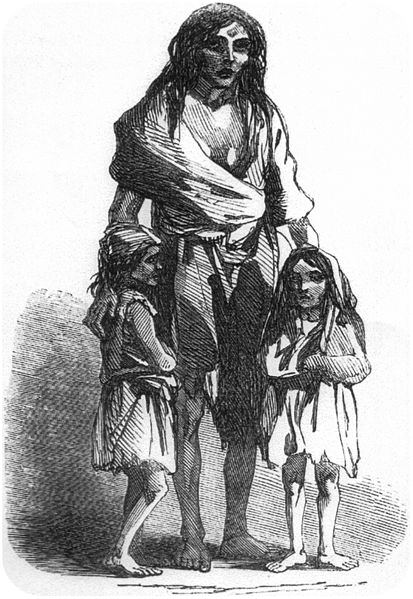READ: Limiting Factors
| Site: | Mountain Heights Academy OER |
| Course: | Biology Q1 |
| Book: | READ: Limiting Factors |
| Printed by: | Guest user |
| Date: | Sunday, 27 July 2025, 11:27 AM |
Limiting Factors
What happened during the Irish Potato Famine?
In the 1800s, a disease called potato blight destroyed much of the potato crop in Ireland. Since many Irish people depended on potatoes as their staple food, mass starvation and emigration resulted. This caused Ireland's population to dramatically decrease. Lack of food is one factor that can limit population growth.
Limiting Factors to Population Growth
For a population to be healthy, factors such as food, nutrients, water and space, must be available. What happens when there are not resources to support the population? Limiting factors are resources or other factors in the environment that can lower the population growth rate. Limiting factors include a low food supply and lack of space. Limiting factors can lower birth rates, increase death rates, or lead to emigration.
Population Growth and Carrying Capacity
In nature, when the population size is small, there is usually plenty of food and other resources for each individual. When there is plenty of food and other resources, organisms can easily reproduce, so the birth rate is high. As the population increases, the food supply, or the supply of another necessary resource, may decrease. When necessary resources, such as food, decrease, some individuals will die. Overall, the population cannot reproduce at the same rate, so the birth rates drop. This will cause the population growth rate to decrease.
When the population decreases to a certain level where every individual can get enough food and other resources, and the birth and death rates become stable, the population has leveled off at its carrying capacity.
When organisms face limiting factors, they show logistic growth (S-shaped curve, curve B in the figure below ). Competition for resources like food and space cause the growth rate to stop increasing, so the population levels off. This flat upper line on a growth curve is the carrying capacity. The carrying capacity (K) is the maximum population size that can be supported in a particular area without destroying the habitat. Limiting factors determine the carrying capacity of a population. Recall that when there are no limiting factors, the population grows exponentially. In exponential growth (J-shaped curve, curve A in the figure below ), as the population size increases, the growth rate also increases.
Exponential and Logistic Growth. Curve A shows exponential growth. Curve B shows logistic growth. Notice that the carrying capacity (K) is also shown.
Other Limiting Factors
Other limiting factors include light, water, nutrients or minerals, oxygen, the ability of an ecosystem to recycle nutrients and/or waste, disease and/or parasites, temperature, space, and predation. Can you think of some other factors that limit populations?
In desert states, such as Utah, water is crucial for crop growth and local animal populations, and in this way is a limiting factor for population growth of certain plant and animal species. Watershed areas are set up to catch spring runoff in reservoirs for use throughout the Intermountain West.
The opposite situation can also be true: too much water can be a limiting factor in certain ecosystems. Whereas most plants like rain, an individual cactus-like Agave Americana plant actually likes to grow when it is dry. Rainfall limits reproduction of this plant which, in turn, limits growth rate. Can you think of some other factors like this?
Human activities can also limit the growth of populations. Such activities include use of pesticides, such as DDT, use of herbicides, and habitat destruction.
Summary
- Limiting factors, or things in the environment that can lower the population growth rate, include low food supply and lack of space.
- When organisms face limiting factors, they show logistic type of growth (S-curve).

